
Gibbsy
March 4, 2013
Rudolf Kolisch’s name came up while I was at the Marlboro Music Festival this summer. The distinguished violinist had been a Marlboro participant late in life. Along with his other remarkable accomplishments, Kolisch was the rare violinist who played the instrument “left-handed.” Because of a childhood injury to the middle finger of his left hand, Kolisch reversed the traditional practice of holding the violin in the left hand, the bow in the right, and began his violin studies all over again.
The violin has almost always been set up for the traditional hand positions. The instrument’s four strings, E, A, D, and G, sit right to left on the bridge, the bass bar placed under the left side of its upper plate, and the sound post connecting upper and lower plates positioned on the right side to best project the violin’s tonal range. But why did this arrangement win out over hands reversed? My friend, violinist Benjamin Bergmann, thinks that it may have come from the majority of right-handed gentlemen from the Baroque onwards who both fenced and played a stringed instrument. If they held their swords in the right hand, wouldn’t the inclination be to hold another long, slender object- a violin bow, for example- in the same hand, assuming those gentlemen survived their duels.
I’ve always been amused to hear people talk about left-handed violinists. All the violinists I know, yours truly included, play with both hands- even those so-called left-handed fiddlers, as far as I can tell. Someone capable of playing the violin with only one hand, left or right, could make a fortune as a circus attraction.
The very idea of a one-handed violinist reminds me of something that happened to me at Marlboro close to fifty years ago. The festival has always been about the glories of chamber music, but we young musicians needed some sort of physical exercise as a counter balance to sitting in a chair fiddling away for hours each day. Some tried swimming, others walked or ran. My choice was tennis. As a relative beginner, I wasn’t very good and certainly not very wise. I fell running for a backhand and fractured my wrist on the hard court surface. Within hours, I had seen a local doctor, had the necessary x-rays taken, and had my hand and arm put in a cast.
That should have been the end of this unfortunate episode except that Irene Serkin, wife of pianist and Marlboro founder Rudolf Serkin, got wind of the accident. She was shocked that I had entrusted my injury to a doctor with only regional experience when my very career as a violinist could be in jeopardy. This would not do. In no time at all, Mrs. Serkin had made an appointment with her doctor in Philadelphia for that very day, booked a flight, and arranged for someone to drive me to the airport.
On the way out of Marlboro, my driver and I stopped at Gibbsy’s convenience store for something to eat. Gibbsy was one of those taciturn New Englanders who chose to keep conversation limited to such utterances as “Nope,” “Yep,” or “That’ll be $1.98″. I must have been in Gibbsy’s store dozens of times without hearing much more than an abbreviated sentence or two out of him.
I could see Gibbsy eyeing my cast as I brought a sandwich and drink to the counter. He rang the items up without comment, but curiosity must have finally won out.
“What’cha do to your arm?” Gibbsy asked.
“I broke it.” I answered. Gibbsy thought this over briefly.
“Where ya goin now?”
“I’m going to Philadelphia, Gibbsy.”
Gibbsy pondered this last answer a bit longer before coming out with his third and final question.
“Got much use for one-armed violinists down there?”

Publicity photo mistakenly printed backwards making me one of those rare “left-handed” violinists.
Subscribe
Sign up to receive new stories straight to your inbox!








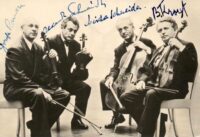





















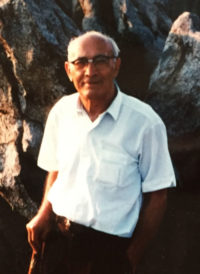


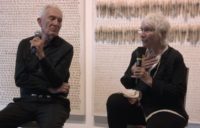


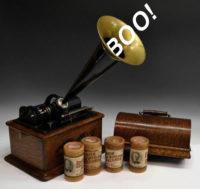
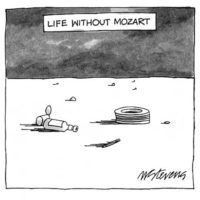















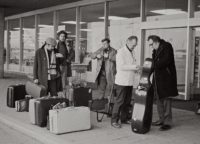



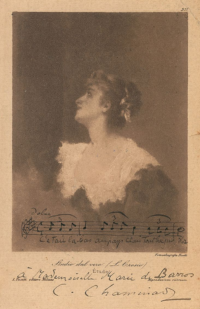




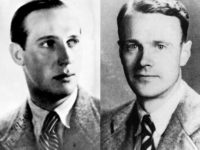


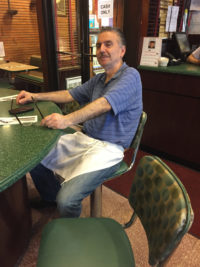



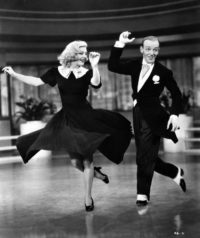







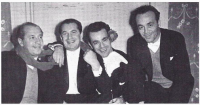
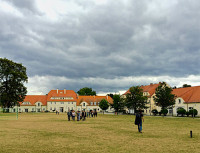
























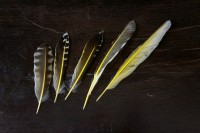

























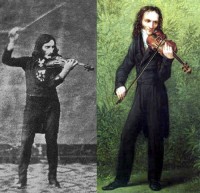



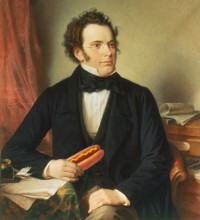

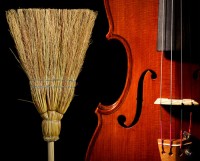





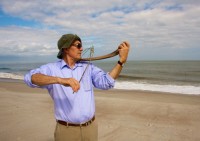























Comments
It is funny how there is an extreme prejudice against ‘left-handed’ violinists. Only once did I observe a lhv playing in a community orchestra and thought that it was the oddest sight–probably because the player’s bow was pointed opposite to the rest of the section, and he looked like he was going to poke out his stand partner’s eye. Kolish, on the other hand, probably got away with it playing in quartets by sitting on the right, as internet photos appear to show. In contrast, most people probably think nothing of watching a left-handed guitarist, of which there many famous ones (Paul McCartney and Jimi Hendrix possibly being the most famous).
Wonderful story! BTW, judging by your blog photo and the publicity photo, you’re actually one of those rarer-than-rare ambidextrous violinists.
Another famous two-handed violinist who held the bow in his left hand: the supremely talented Charlie Chaplin.
Hi Arnold.
Just a small detail.Charlie Chaplin was a ‘left handed Cellist’.
The late conductor, Paavo Berglund, played the violin “left-handed.” He had the strings and set up exactly as righties would do. It was rather strange to see him raise his arm, the left one at that, high and higher as he goes to a lower string. Apparently, he was a member of the Helsinki Philharmonic violin section but had to sit alone as no one could sit comfortably sharing a stand with him. I wonder if getting stabbed by Paavo’s bow was one possibility. Needless to say, he conducted left-handed also and did so wonderfully over a long and distinguished career.
And it looks like you have inspired a whole new generation (of one) behind you to do the same! This would NEVER fly in the Israeli Army, you know… ;-)
My Tchaikovsky and Glazunov Concerto CD has cover that got reversed. The Francais-Morell shop had it on display next to my Prokofiev CD displaying the regular set up. I was told that many people were confused by it, and I told the shop, that one was played left handed, and the other right handed, that they must buy both, and see which one sounds better…
Love your blog!
“Backwards” playing has become a kind of stunt hobby for otherwise “Rightwise” players… Here’s an impressive example:
http://youtu.be/a38KO9Zk1zw
Cheers!
I was a Kolisch student in Madison at the U of Wisconsin, not of studio violin but of chamber music and courses on the 2nd Viennese school. I studied applied violin with the 2nd violinist of the Pro Arte at the time, Robert Basso. Kolisch’s quartet in Europe premiered many of the 2nd Viennese chamber works plus the last two Bartok Quartets. He was coincidentally Schoenberg’s brother-in-law. (Kolisch’s sister became Schoenberg’s 2nd wife after the first one had died.) Kolisch didn’t “teach” violin (probably a good thing…he was a direct Sevcik student.) In Europe he played a Strad which had been reversed (meaning the peg box was switched, the bass bar put on the other side,sound post switched, and of course restrung. He had to give the violin back when he emigrated to America with the rise of the Hitlerites and most of the time I knew him (and turned pages for him and Gunnar Johansen) he played a Camilli, similarly reversed. When I was in college 1960-64 at the U of Wisconsin where Kolisch was a long time faculty member and leader of the Pro Arte, he had a maker who had a shop just up the street from the university make him a “from the start” left handed violin. His name was Lawrence LaMay, a respected maker who unfortunately started too late and died too early to make a big impact. LaMay wanted a model from which to take measurements so he built two violins, more or less simultaneously from the same mold, one conventional from which to take measurements for plate thicknesses (this was apparently easier than transposing all his written templates); and, Kolisch’s violin. These were both rather early LaMay violins…he later became more prolific. Kolisch’s LaMay was finished shortly before I graduated as was its “twin”…they are stained in different colors. Kolisch’s was a brunette, mine a strawberry blonde, LOL. About three weeks before I graduated, Kolisch learned that I had a job waiting for me upon graduation so he told me “go rob a bank or something, but get that other fiddle.” (My career was not in music.) Mr. LaMay gave me some generous terms…no down payment (I hadn’t gotten a paycheck, of course as yet), no interest, pay when you can – I took 2 1/2 years. I’ve played that violin ever since. Ironically, I’m the one who is a natural left-hander. I’ve done an informal poll among my fellow string players and the natural left-handed types (for writing, throwing etc.) are somewhat more numerous than their percentage in the general population. Kolisch’s LaMay was converted to normal configuration after his death and last I heard was in the hands of a talented amateur with whom I corresponded some ten or so years ago.
When watching black-and-white movies as children our Dad said at least once, in addition to saying many times “Listen to the lovely violin playing”, which was inevitably Toscha Seidel, “Look at the left-handed violinist”, as there indeed was in whatever Hollywood orchestra it was. A T’ai Chi teacher once advised I could solve any problems with the instrument by practising both L- and R-handed, and renowned antique violinst Reinhardt Goebbels did successfully cross over to his sinister side following an accident. This is still definitely on my to-do list, but in the meantime I have taken up the cello as an easier alternative.
Leave a Comment
*/